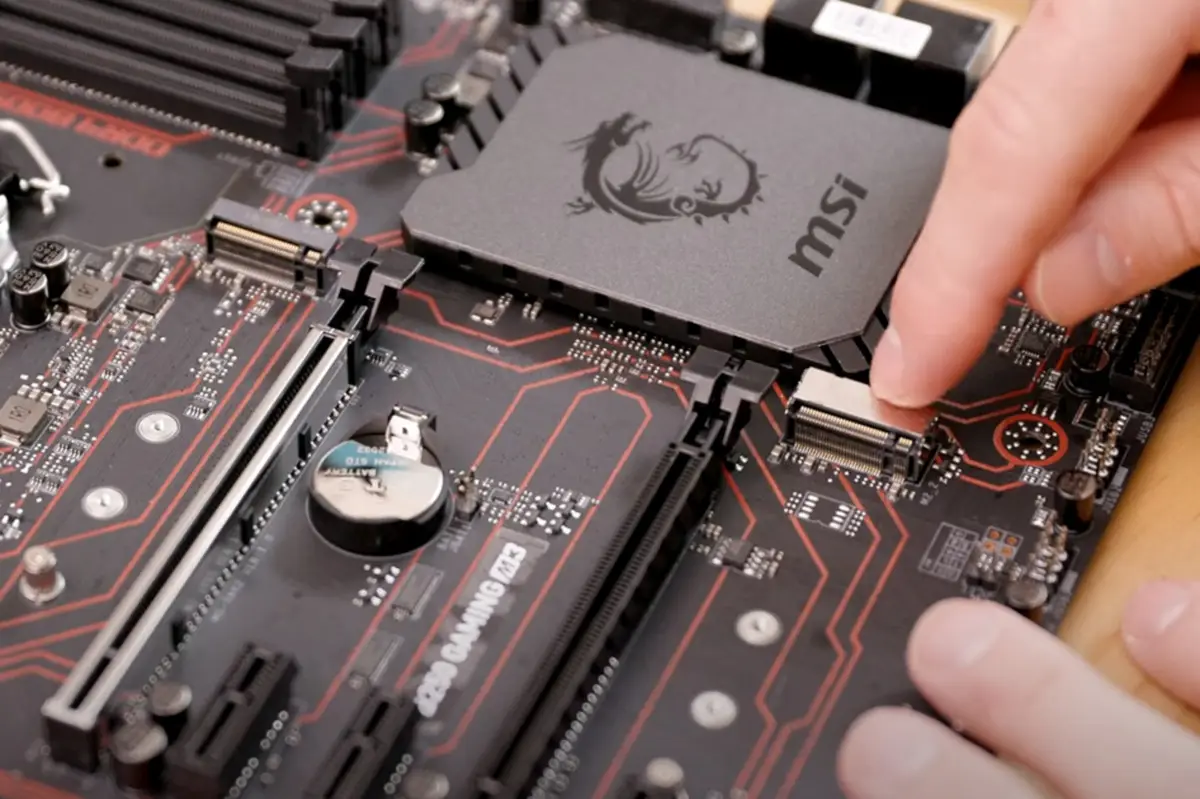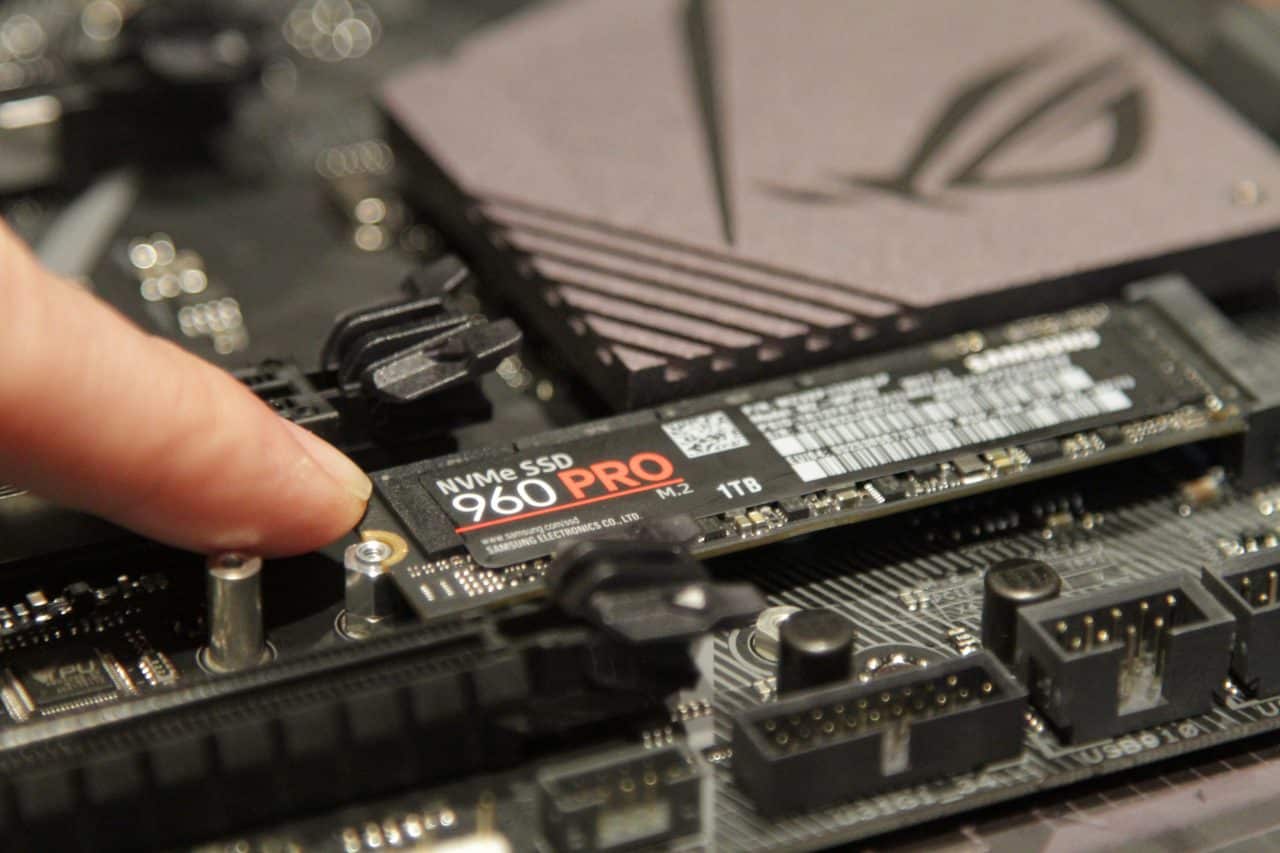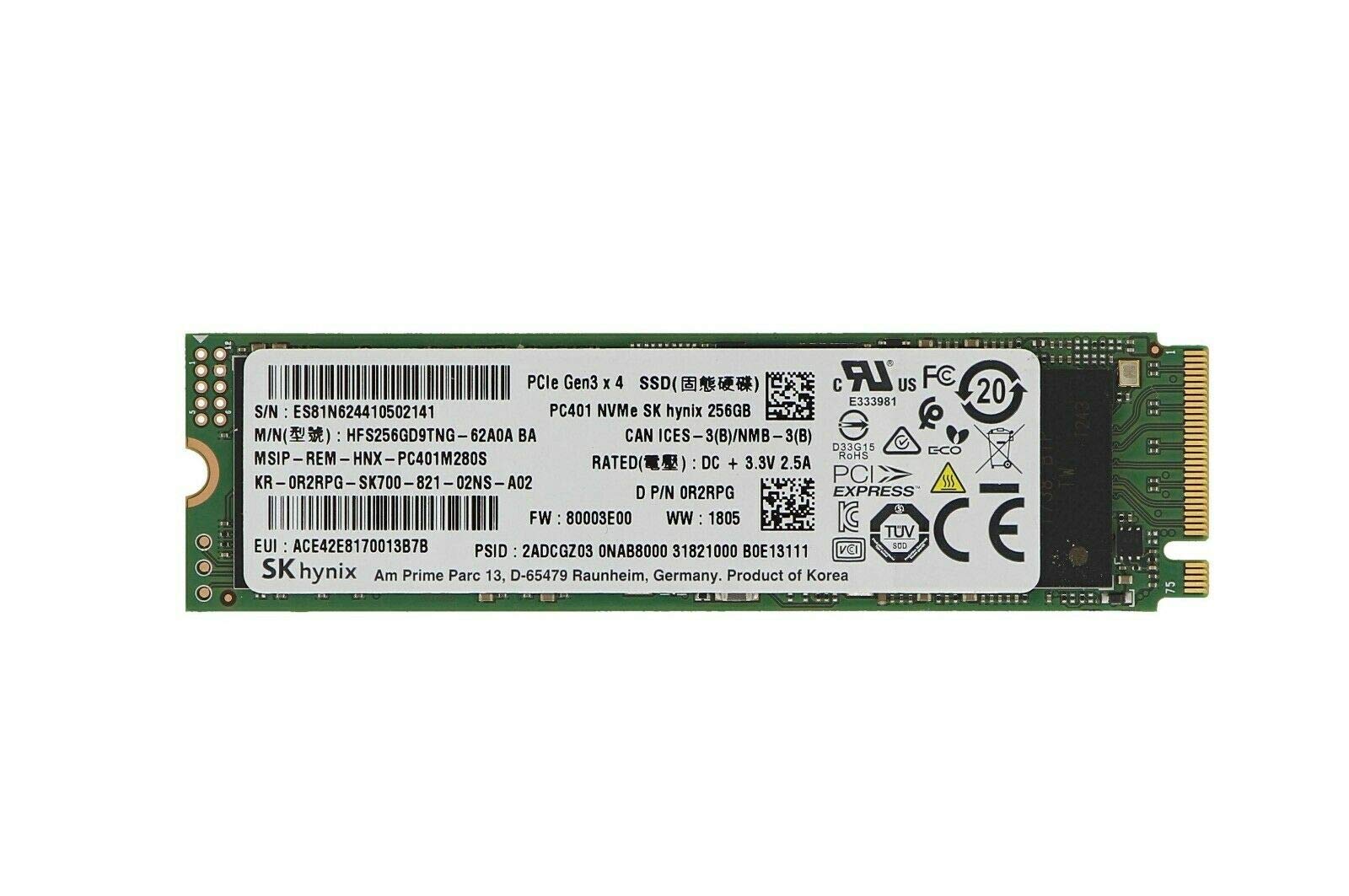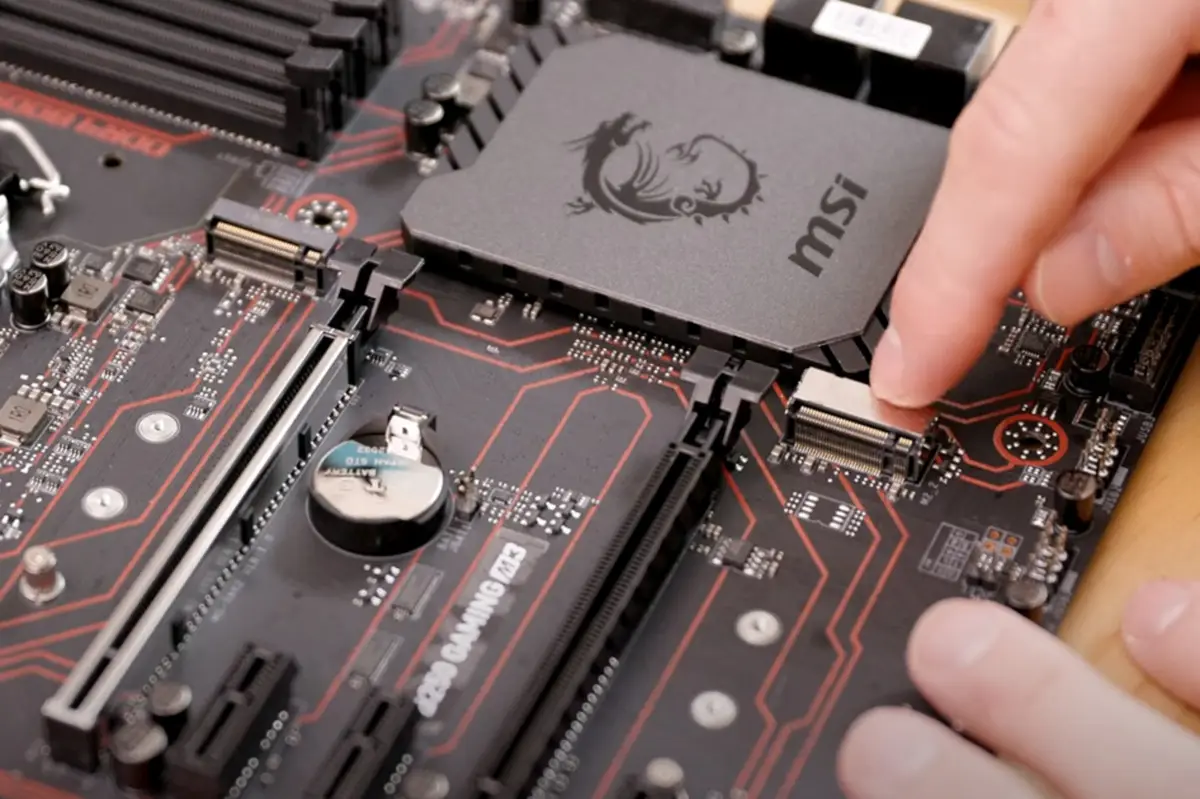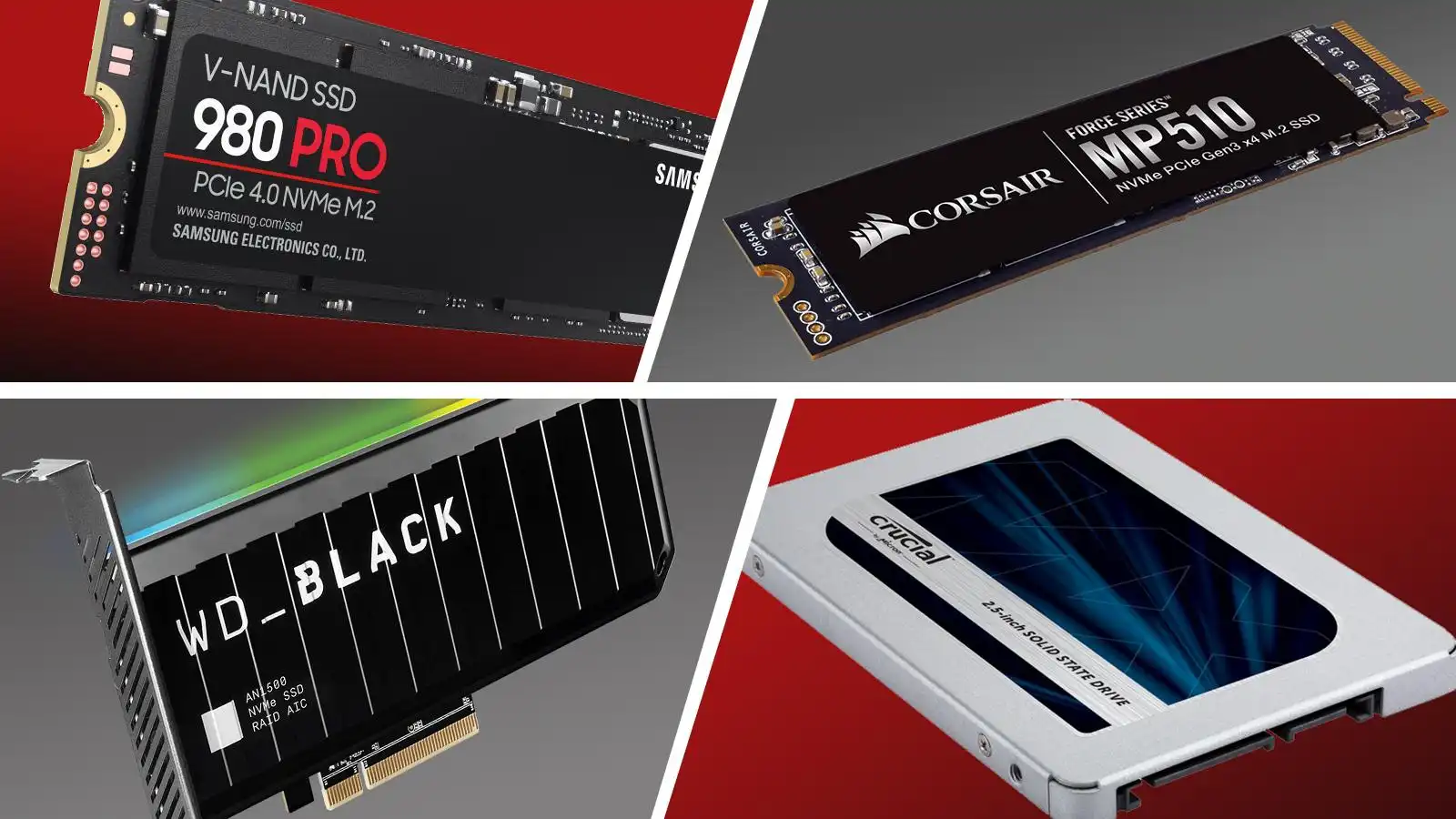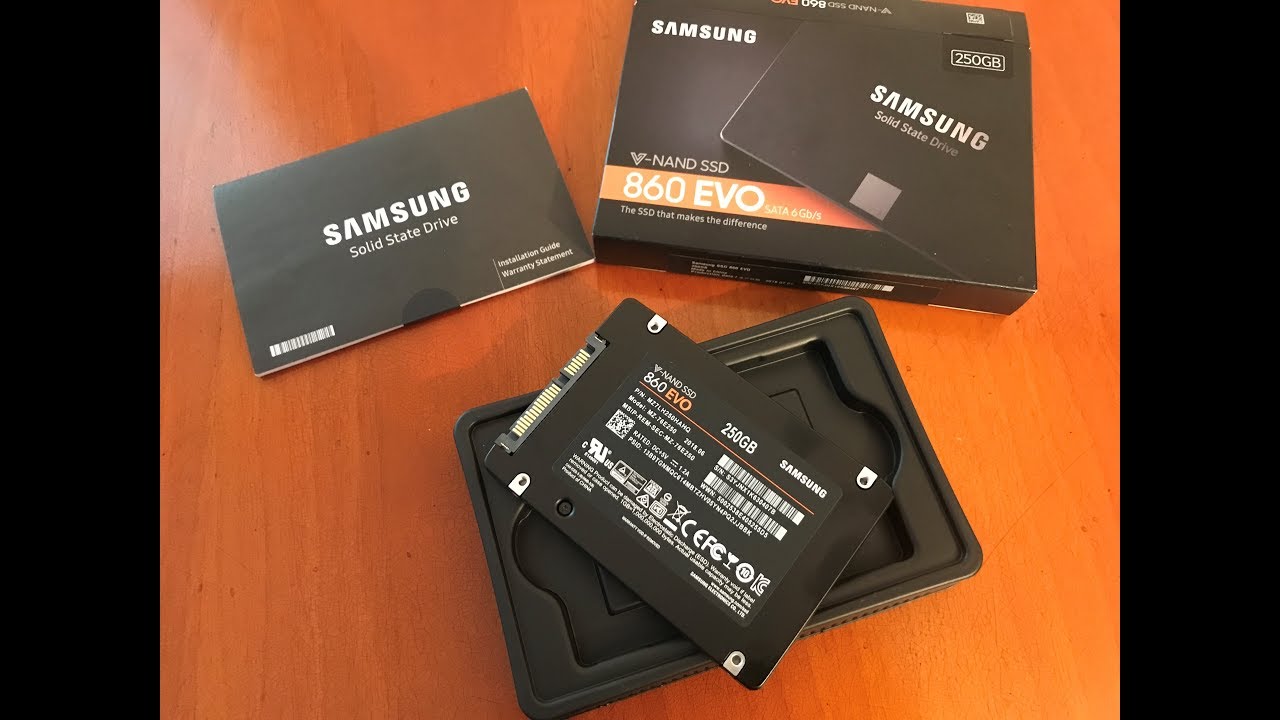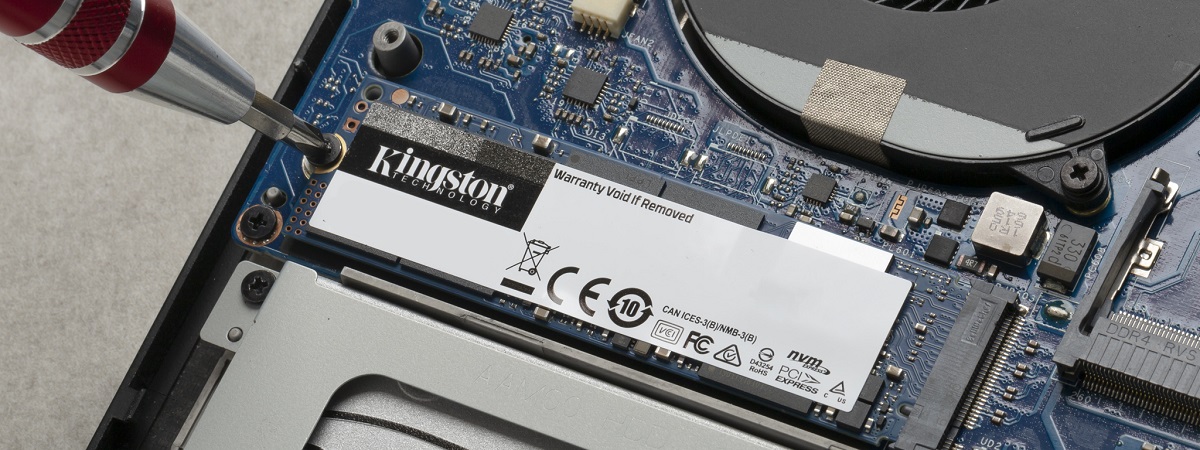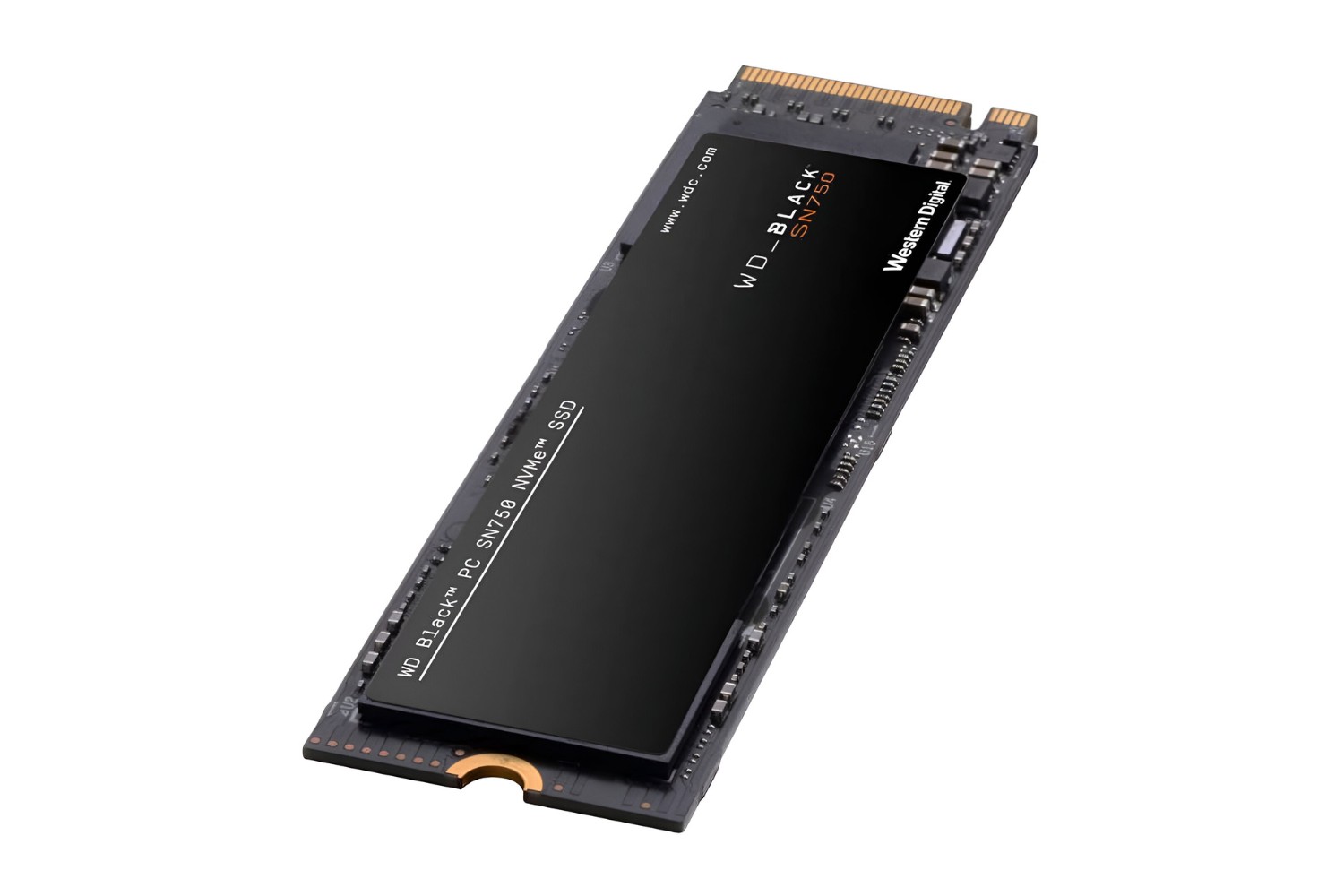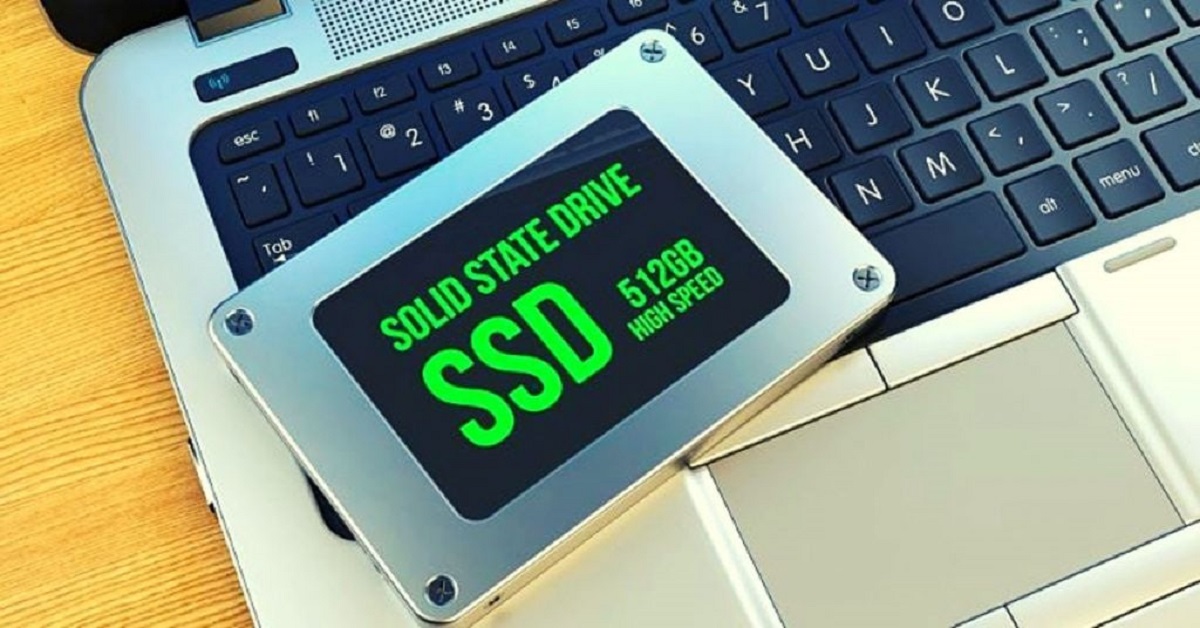What is a Solid State Drive (SSD)
A Solid State Drive, commonly referred to as an SSD, is a type of storage device that uses flash memory to store data. Unlike traditional Hard Disk Drives (HDDs) which use mechanical components like spinning disks and a read/write head, SSDs have no moving parts. This makes them faster, more durable, and less prone to mechanical failures.
SSDs have gained popularity in recent years due to their superior performance compared to HDDs. They offer faster read and write speeds, allowing for quicker boot-ups, faster file transfers, and improved overall system responsiveness. Additionally, SSDs generate less heat and produce no noise during operation, making them an ideal choice for both desktop and laptop computers.
Unlike HDDs, which store data magnetically on spinning platters, SSDs store data electronically in NAND flash memory chips. This technology enables faster data access speeds and better reliability. SSDs also have an advantage in terms of power efficiency, consuming less energy than HDDs, which can contribute to longer battery life in laptops and reduced electricity costs for desktop users.
SSDs come in various form factors, including the traditional 2.5-inch size found in most laptops and desktops, as well as smaller M.2 and PCIe form factors. The M.2 and PCIe form factors are commonly used in newer computers and provide even faster performance compared to 2.5-inch SSDs.
Overall, SSDs offer significant advantages over traditional HDDs in terms of speed, reliability, and energy efficiency. As technology continues to improve, SSDs are becoming the preferred choice for consumers and professionals who require high-performance storage solutions.
How SSDs differ from traditional Hard Disk Drives (HDD)
Solid State Drives (SSDs) and traditional Hard Disk Drives (HDDs) serve the same primary purpose of storing data, but they differ in their underlying technology and performance. Understanding these differences can help you make an informed decision when choosing between an SSD and an HDD.
One key difference between SSDs and HDDs is the way they store and retrieve data. HDDs use spinning magnetic disks and a read/write head to access data, similar to a vinyl record player. In contrast, SSDs utilize flash memory, which allows for faster data access speeds. Instead of physically moving parts, SSDs use electronic circuits to read, write, and store data, resulting in near-instantaneous data retrieval.
Another major distinction is the durability and reliability of SSDs compared to HDDs. Because they lack moving parts, SSDs are less prone to physical damage caused by shocks, drops, or vibrations. HDDs, however, are more susceptible to mechanical failures, as any damage to the spinning disks or read/write head can render the drive useless.
SSDs also offer significant advantages in terms of power consumption. Since they do not require mechanical components to function, SSDs consume less power compared to HDDs. This results in longer battery life for laptops and reduced electricity usage for desktop computers.
Furthermore, SSDs excel in terms of speed and performance. Due to the absence of moving parts, SSDs can access data much faster than HDDs. This translates into quicker boot times, faster application launches, and improved overall system responsiveness. Tasks such as file transfers and data backups are significantly faster with SSDs, making them well-suited for high-demand applications.
While SSDs generally offer superior performance, there are a few areas where HDDs still have an advantage. HDDs typically provide larger storage capacities at a more affordable price per gigabyte compared to SSDs. This makes HDDs the preferred choice for users requiring ample storage space, such as media creators and video editors.
In summary, SSDs differ from traditional HDDs in terms of technology, performance, durability, power consumption, and price. SSDs offer faster data access, increased reliability, lower power consumption, and superior overall performance. On the other hand, HDDs provide larger storage capacities at a more affordable price. It’s important to weigh these factors to determine the best storage solution for your specific needs.
Compatibility of SSDs with Motherboards
When considering upgrading your storage solution to a Solid State Drive (SSD), one crucial factor to consider is the compatibility of the SSD with your motherboard. Ensuring that your SSD is compatible with your motherboard is essential to ensure optimal performance and functionality. Here are the key aspects to consider when determining SSD compatibility:
- Physical compatibility: SSDs come in various form factors, including the standard 2.5-inch size, M.2, and PCIe. It’s crucial to check if your motherboard has the appropriate slots for the form factor you choose. Most modern motherboards have at least one M.2 slot, but older motherboards may only support the traditional 2.5-inch SSDs.
- Interface compatibility: SSDs use different interfaces, such as SATA (Serial ATA) and NVMe (Non-Volatile Memory Express). SATA SSDs connect to the motherboard using standard SATA cables, while NVMe SSDs use the faster PCIe slots. It’s crucial to check if your motherboard supports the interface your SSD uses. If your motherboard supports both SATA and NVMe, it’s essential to ensure that the specific slot you intend to use supports the desired interface.
- Capacity compatibility: Make sure your motherboard supports the capacity of the SSD you plan to install. Most modern motherboards support high-capacity SSDs, but it’s always recommended to check the specifications of your motherboard to ensure compatibility. Keep in mind that some older motherboards may have limitations on the maximum capacity they can support.
- BIOS compatibility: It’s crucial to check if your motherboard’s BIOS (Basic Input/Output System) supports SSDs. Updating your motherboard’s BIOS to the latest version can often enable SSD compatibility and provide the necessary drivers for proper functionality.
Before purchasing an SSD, it’s recommended to consult your motherboard’s documentation or visit the manufacturer’s website to check for compatibility. Additionally, many SSD manufacturers provide compatibility lists or tools on their websites to help you determine if their SSDs are compatible with specific motherboards.
Overall, ensuring compatibility between your SSD and motherboard is vital for a hassle-free upgrade. By considering the physical form factor, interface, capacity, and BIOS compatibility, you can make an informed decision and choose an SSD that works seamlessly with your motherboard, providing you with the best performance and reliability for your storage needs.
Factors to consider when determining SSD compatibility
When determining the compatibility of a Solid State Drive (SSD) with your system, there are several key factors to consider. These factors will help ensure that the SSD will work optimally with your setup and provide the desired performance and functionality. Here are the essential factors to keep in mind:
- Form factor: SSDs come in various form factors, such as the traditional 2.5-inch size, M.2, and PCIe. It’s crucial to choose an SSD that is compatible with the physical dimensions and slots available in your system. Ensure that the chosen form factor is supported by your system’s motherboard or expansion slots.
- Interface type: SSDs use different interface types, including SATA (Serial ATA) and PCIe (Peripheral Component Interconnect Express). SATA SSDs are commonly used and connect to the system via standard SATA cables, while PCIe SSDs provide faster performance through PCIe slots. Verify the interface type supported by your system to ensure compatibility with the chosen SSD.
- Capacity requirements: Determine the required storage capacity based on your needs. Consider factors such as the size of your operating system, applications, and files you plan to store on the SSD. Ensure that your system has sufficient capacity to accommodate the desired SSD size.
- Speed considerations: If speed is a priority, consider the read and write speeds of the SSD. SSDs with faster speeds typically offer improved performance, particularly for tasks like booting up the system or transferring large files. Confirm that your system supports the desired speed capabilities of the SSD.
- Power requirements: Evaluate the power requirements of the SSD and ensure that your system’s power supply is sufficient to accommodate the SSD. SSDs typically consume less power than traditional Hard Disk Drives (HDDs), but it’s still essential to verify that your system can provide the necessary power for the SSD to function properly.
- Budget considerations: Determine your budget for the SSD upgrade, and choose an SSD that offers the desired features and performance within your price range. SSDs with larger capacities and faster speeds are generally more expensive, so it’s important to find the right balance between cost and performance.
By considering these factors when determining SSD compatibility, you can select an SSD that seamlessly integrates into your system and meets your requirements. It’s important to consult the specifications of your system’s motherboard or consult the manufacturer’s documentation and support resources to ensure compatibility before making a purchase decision.
Checking for physical compatibility
When considering the compatibility of a Solid State Drive (SSD) with your system, one of the crucial aspects to check is the physical compatibility. This ensures that the physical dimensions and mounting options of the SSD are compatible with your system’s form factor. Here’s what you need to know when checking for physical compatibility:
- Form factor: Determine the form factor of your SSD and ensure that it matches the available space in your system. The most common form factors are the 2.5-inch, M.2, and PCIe. The 2.5-inch SSDs are widely used and fit into standard drive bays. M.2 SSDs are smaller and connect directly to the motherboard. PCIe SSDs utilize the PCIe slots for installation. Consult your system’s specifications or manual to determine the compatible form factors.
- Drive bays and mounting options: If you are considering a 2.5-inch SSD, check if your system has the necessary drive bays and mounting brackets to accommodate it. Some systems may require additional adapters or brackets for proper installation. M.2 SSDs, on the other hand, require the appropriate M.2 slot on the motherboard. Ensure that your system has the required M.2 slot and the correct keying (B, M, or both).
- Physical clearance: Consider the physical clearance within your system, especially if you are adding multiple SSDs or have other components nearby. Make sure there is enough space around the SSD for proper airflow and cooling. Additionally, check the clearance for any cables, connectors, or other components that could interfere with the installation or operation of the SSD.
- Cable connections: Verify the type of cable connections required by the SSD and ensure that your system has the appropriate connectors. SATA SSDs typically use standard SATA cables, while M.2 and PCIe SSDs connect directly to the motherboard or expansion slots without the need for cables.
It’s essential to consult your system’s documentation, such as the user manual or manufacturer’s website, to understand the physical specifications and requirements. These resources will provide you with detailed information about the available drive bays, mounting options, form factor support, and any necessary accessories or adapters.
By thoroughly checking for physical compatibility, you can ensure that the SSD fits seamlessly into your system. This includes verifying the form factor, checking the availability of drive bays and mounting options, ensuring sufficient physical clearance, and confirming the required cable connections. Doing so will allow for a smooth installation and integration of the SSD into your system, maximizing its performance and functionality.
Checking for interface compatibility
Interface compatibility is a crucial factor to consider when determining the compatibility of a Solid State Drive (SSD) with your system. The interface determines how the SSD connects to the motherboard and affects the speed and performance of data transfer. Here’s what you need to know when checking for interface compatibility:
- SATA interface: SATA (Serial ATA) is the most common interface used by SSDs, especially 2.5-inch SSDs. SATA SSDs connect to the motherboard using standard SATA data cables and power connectors. Before purchasing an SSD, verify that your motherboard has available SATA ports and supports the SATA version of the SSD you plan to install (SATA III being the most common).
- NVMe interface: NVMe (Non-Volatile Memory Express) is a more advanced interface that offers faster data transfer speeds compared to SATA. NVMe SSDs are typically installed in M.2 or PCIe slots and provide significantly higher performance. If you are considering an NVMe SSD, check if your motherboard supports NVMe and has the necessary M.2 or PCIe slots for installation. Additionally, make sure that the specific slot you plan to use supports NVMe.
- Compatibility with older interfaces: If you have an older system with an IDE (Integrated Drive Electronics) interface, it is important to note that most modern SSDs do not support IDE. IDE interfaces are typically found in older systems and are not compatible with modern SSDs. It’s advised to check your system’s specifications to determine if it has a compatible interface for the SSD.
- Interface speed: Different SATA and NVMe interfaces can have varying speeds. SATA SSDs generally have slower speeds compared to NVMe SSDs. When checking for interface compatibility, consider the desired performance and choose an SSD with a compatible interface speed that aligns with your requirements.
- Bios compatibility: In some cases, SSDs may require a firmware update or BIOS update to ensure proper compatibility and functionality. Check the SSD manufacturer’s website and the motherboard manufacturer’s website for any required updates. Updating the BIOS to the latest version can provide necessary SSD support.
It is important to consult your system’s documentation, such as the motherboard manual or manufacturer’s website, to confirm the supported interfaces and speeds. Additionally, SSD manufacturers often provide compatibility information and tools on their websites, allowing you to check if the SSD you are considering is compatible with your specific system.
By checking for interface compatibility, you can ensure that the SSD is compatible with your system’s available interfaces, supports the desired speed capabilities, and can provide optimal performance. This will allow for a smooth and seamless integration of the SSD into your system, enhancing its overall speed and responsiveness.
Checking for capacity compatibility
Another essential factor to consider when determining the compatibility of a Solid State Drive (SSD) with your system is the capacity compatibility. The capacity of the SSD refers to the amount of data it can store, and it’s crucial to ensure that the chosen SSD has sufficient capacity for your needs. Here are the key points to consider when checking for capacity compatibility:
- Storage requirements: Evaluate your storage requirements and determine the amount of data you need to store on the SSD. Consider factors such as the size of your operating system, applications, and files that you plan to transfer or store on the SSD. It’s important to allocate enough space to accommodate your current needs and potential future growth.
- Available space: Enable sufficient physical space within your system to install the SSD. Verify that your system has the necessary drive bays or M.2 slots to accommodate the chosen capacity of the SSD. Additionally, consider any space limitations imposed by other components or cables within the system.
- Motherboard support: Check if your motherboard supports the maximum capacity of the SSD you plan to install. Most modern motherboards support high-capacity SSDs, but it’s always recommended to consult the motherboard’s documentation or manufacturer’s website to confirm the maximum supported capacity.
- Budget considerations: Keep in mind that as the capacity of the SSD increases, the cost generally increases as well. Determine your budget for the SSD upgrade and select a capacity that fits within your price range while meeting your storage needs.
When considering capacity compatibility, it’s important to strike a balance between having sufficient storage space and managing costs. Consider the type of data you will store on the SSD and prioritize your storage requirements accordingly. For instance, if your focus is on high-performance applications or large media files, you may need a larger capacity SSD. However, if your needs are primarily focused on the operating system and essential software, a smaller capacity SSD may suffice.
It’s always recommended to consult the specifications of your system, including the motherboard documentation, to ensure that your system can support the desired capacity of the SSD. Additionally, SSD manufacturers often provide compatibility information and tools on their websites, assisting you in determining the maximum capacity supported by your system.
By checking for capacity compatibility, you can ensure that the chosen SSD has sufficient storage space for your needs and is supported by your system. This will allow for a seamless integration of the SSD, providing ample storage capacity and facilitating efficient data management.
Other considerations when choosing an SSD
While compatibility is a crucial factor when choosing a Solid State Drive (SSD) for your system, there are a few other considerations that can help you select the SSD that best meets your needs. These factors go beyond compatibility and can further enhance the performance and functionality of your storage solution. Here are some other important considerations:
- Performance: SSDs vary in terms of read and write speeds, which directly impact the performance of your system. Consider the performance requirements of your applications and workflows, and choose an SSD with faster speeds for improved responsiveness and data transfer rates. Pay attention to the SSD’s specifications, including the sequential read and write speeds, as well as random read and write speeds.
- Endurance and reliability: SSDs have a limited number of program/erase cycles, meaning they can only handle a certain amount of data written to them before their performance degrades. Consider the endurance rating of the SSD, often measured in terabytes written (TBW), to ensure it can handle your intended workload. Additionally, look for SSDs from reputable manufacturers known for reliability and quality control.
- Warranty: Check the warranty provided by the SSD manufacturer. A longer warranty period typically indicates a higher level of confidence in the product’s quality and durability. It’s recommended to choose an SSD with a warranty that suits your needs and provides peace of mind.
- Price: SSD prices can vary significantly based on factors such as capacity, performance, and brand. Determine your budget and consider the long-term value of the SSD. While higher-end SSDs may be more expensive initially, they often offer better performance, endurance, and reliability that can outweigh the initial investment.
- Brand reputation: Take into account the reputation of the SSD brand. Established and reputable brands often have better-quality components, firmware updates, and customer support. Research customer reviews and ratings to gain insights into the experiences of other users with the specific SSD model and brand you are considering.
When selecting an SSD, it’s important to strike a balance between performance, reliability, and cost. Consider your specific needs and preferences, whether it’s for gaming, content creation, or general use. Doing thorough research, comparing specifications, and reading user reviews can help you make an informed decision and choose the best SSD for your system.
Remember, compatibility is just one aspect of choosing an SSD. Considering other factors like performance, endurance, warranty, price, and brand reputation can help ensure a satisfying and long-lasting storage solution that meets your specific requirements.
Conclusion
Choosing the right Solid State Drive (SSD) for your system involves considering a variety of factors to ensure compatibility and optimal performance. By following the guidelines outlined in this article, you can make an informed decision and find an SSD that meets your needs.
Begin by understanding the differences between SSDs and traditional Hard Disk Drives (HDDs). SSDs offer faster speeds, improved durability, and energy efficiency compared to HDDs. These advantages have propelled SSDs to become the preferred choice for storage solutions.
When determining compatibility, consider the physical form factor of the SSD and check if it fits within your system’s available space. Verify the interface type supported by your system, such as SATA or NVMe, and choose an SSD accordingly. Ensure that your motherboard is capable of supporting the selected SSD and its capacity requirements.
Additional considerations include the performance, endurance, warranty, price, and brand reputation of the SSD. Take into account the specific needs of your applications and workflows to determine the required performance levels. Look for an SSD with an appropriate endurance rating and a warranty that offers peace of mind. Compare prices and consider the long-term value of the SSD you choose.
Ultimately, compatibility and other considerations will enable you to select an SSD that seamlessly integrates into your system, providing faster performance, improved reliability, and enhanced storage capabilities. Remember to consult the documentation and resources provided by your system’s manufacturer and the SSD manufacturer to ensure accurate compatibility information.
By carefully considering these factors and making an informed decision, you can confidently upgrade to an SSD that will enhance your system’s performance, improve data storage, and provide a smooth and efficient computing experience.







